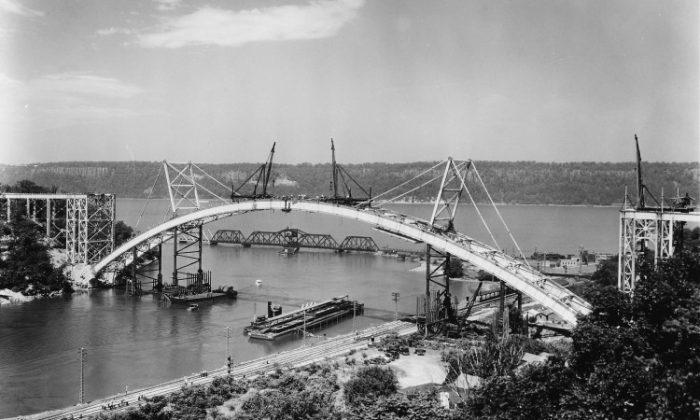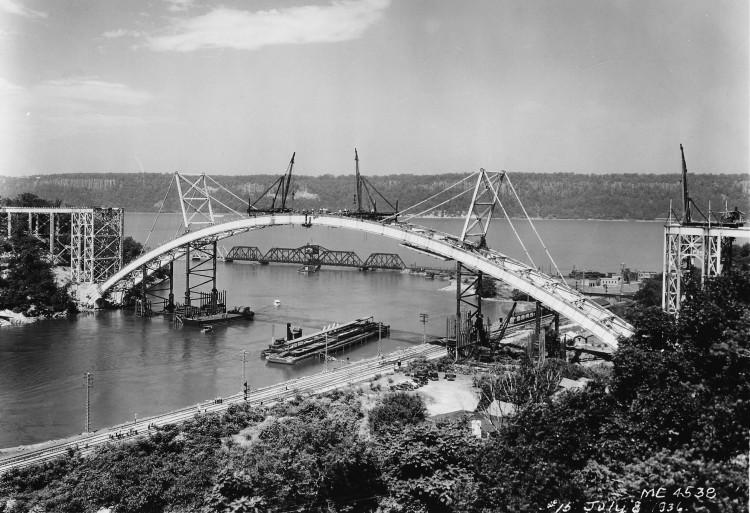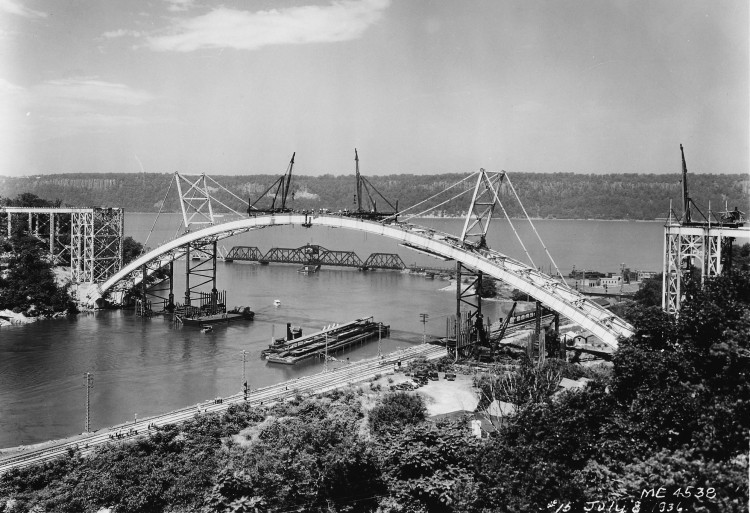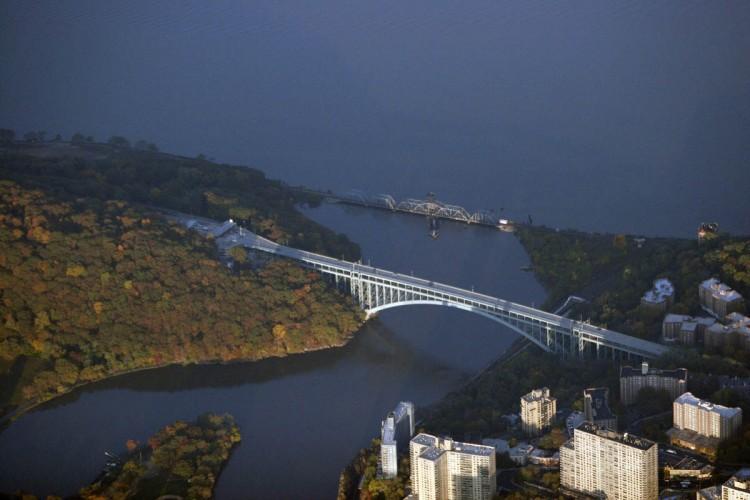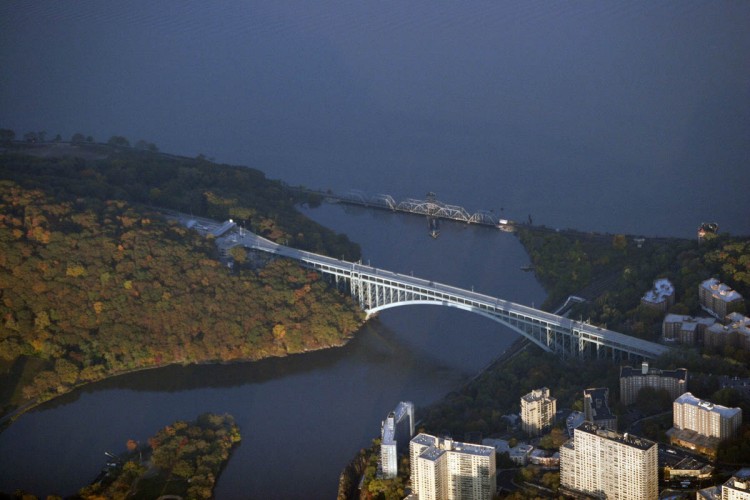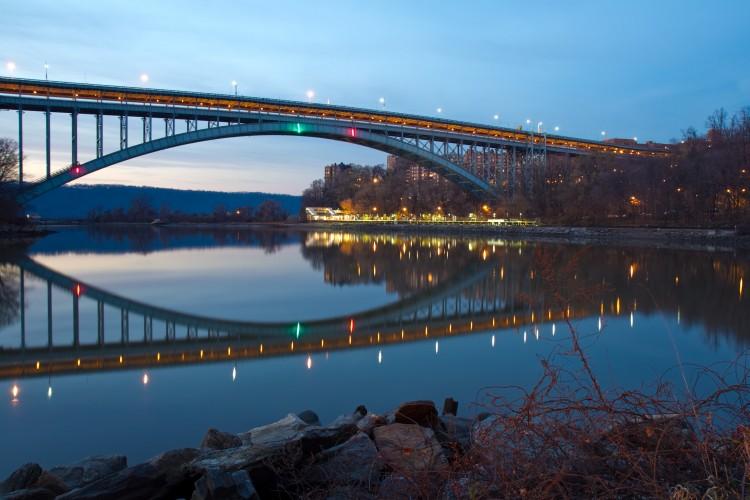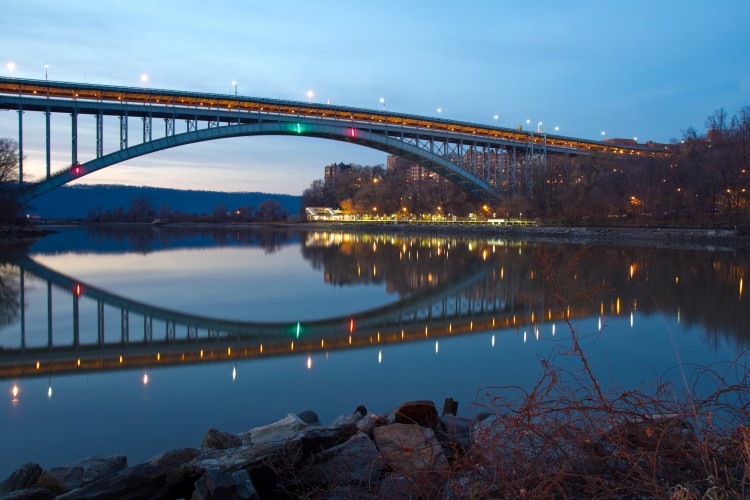NEW YORK—The Henry Hudson Bridge celebrated its 75th anniversary on Dec. 12. Opposition from surrounding neighborhoods postponed its original conception in 1904.
“Manhattanites did not want to see the construction changing the quiet, bucolic nature of Inwood Hill Park,” said Bronx historian Lloyd Ultan during a lecture. “Those on the Bronx side asserted that the bridge would bring congestion and ruin forever the quiet, suburban village-like nature of the neighborhood.”
Powerbroker Robert Moses brought the bridge back into play two decades later, along with parkways on both sides of the river.
Banks feared the bridge would not attract commuters and agreed to put $8.1 million into the project only after costs were cut from $50 million to $10 million. Two roadway levels were reduced to one, with additional financing for the second level depending on the amount of traffic.
Moses kept the final design secret “until the last moment” to avoid the fate of the previous design.
Proving immensely popular—10,000 cars crossed the bridge on the first day and almost 16,000 more crossed by Dec. 20, garnering almost $2,600 from the 10 cent toll—construction of the upper roadway quickly began.
Northbound traffic used the three lane upper roadway, while the four lane lower roadway served commuters into Manhattan. The final cost, including the upper roadway, came in under budget at $5 million.
At the time, the 2,208-foot bridge was the largest plate-girder steel arch bridge in the world.
Ultan said the bridge provided an attractive alternative for affluent Riverdale commuters.
Because of the parkways on both sides, heavy trucks were banned from the Henry Hudson Bridge, earning it a “safe” reputation.
As World War II ended, suburban areas like Riverdale grew in population.
“Soldiers coming home from the war wanted to get married, have a family, and buy a house,” said Horton. “Approximately 75,000 vehicles traversed the bridge every day” in the ‘60s.
The effect on the Riverdale neighborhood has been significant.
“Without it, Riverdale would never have become the vital part of the Bronx and New York City that it is today,” said Ultan. “Plus, in many ways, the Henry Hudson Bridge created modern Riverdale.”
Tolls steadily increased from the original 10 cents to the current $4, and the colors changed.
It began as forest green to blend with the landscape of Inwood Hill Park and Riverdale. In 1989, it became blue to blend with the river. Finally, during the $50 million rehabilitation in 2000, it turned gray.
A pilot program in early 2012 will eliminate cash tolls in favor of EZ pass or, after taking a picture of the license plate, mailed tolls.
